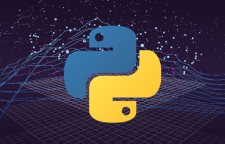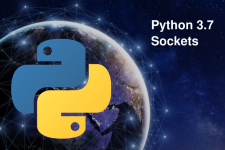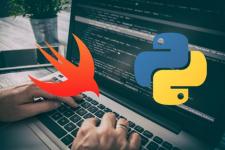Recently I had a question come in from a reader on how to determine where the site packages are installed on macOS Mojave. So, what I wanted to do was create a short video explaining how to find these site packages and how to see what packages are installed. This technique should be applicable on macOS Mojave or High Sierra both. First, let's understand why you would want to know where the site packages are installed on any system? The main reason would be for making development decisions about how to design you Python program. This can be especially valuable for knowing which site pac
Python
Python 3 has an excellent library called asyncio that can be used for writing concurrent code on anything from web-servers, to databases, and even distributed task queues. Asyncio is created from a non-blocking programming model that provides your program the flexibility to delegate data when it is available as instead to waiting for data to be received. This prevents code in your program from getting bottle-necked and allows data tasks to be run concurrently to get greater performance and processing from your program's I/O. On
Network Capture, a Python Module
Featured Post
TCPdump is one of my favorite network packet analysis tools in existence today. In the past year I have enjoyed TCPdump so much that I have wanted to learn more about the project. So, I thought a good place to start would be to get involved contributing on GitHub. My contributions are not much, but they help me learn the ins and outs of the project and how to use some of the more advanced features as I come up in issues or pull requests. During my time thus far I have noticed that a lot o
What’s new in Python is a news feed of articles, trends, and stories happening in the Python open source ecosystem. All of the topics in this article are hand picked from sources such as Github, Bugs.Python.org, Twitter, and of course, python.org.
What’s new in Python is a news feed of articles, trends, and stories hand picked by me on what is happening in the Python open source ecosystem. All of the topics in this article have been hand picked from sources such as Github, Bugs.Python.org, Twitter, and of course, python.org.
Python just received a minor version update to Python 3.7 with many new performance enhancements, added features, and module improvements to the language. One of the existing Python modules in 3.7 that received some nice new enhancements is the ssl module.
Python is about to get a nice new update with many new feature enhancement, performance improvements, and redesigned modules with the release of Python 3.7. At the time of writing this article a release candidate is available today by visiting CPython's github page and checking out branch 3.7. In this two part series I am writing about two updates to Python 3.7 that I feel will benefit the language in regards to networking.
Swift and Python Interop using Dynamic Member Lookup
Featured Post
When the Swift language went into development one of the goals it set out to achieve was to provide a better developer experience than the one that currently existed and to provide long term support against legacy C and Objective-C APIs. Now that these goals have been achieved the Swift community is widening it's support to working with dynamic languages such as Python, Ruby, JavaScript, and Perl in Swift 4.2's language addition for
How to Write Python Unit Tests
Featured Post
Python's Unified TLS API
Featured Post
Over the last 6 months I have noticed a lot of code going into CPython working with SSL and TLS. At first I did not think anything commits and brushed it off as bug fixes and improvements. However, as the months went by and I kept seeing these commits come through it started to get my curiosity piqued about what might be happening in language under the hood.







